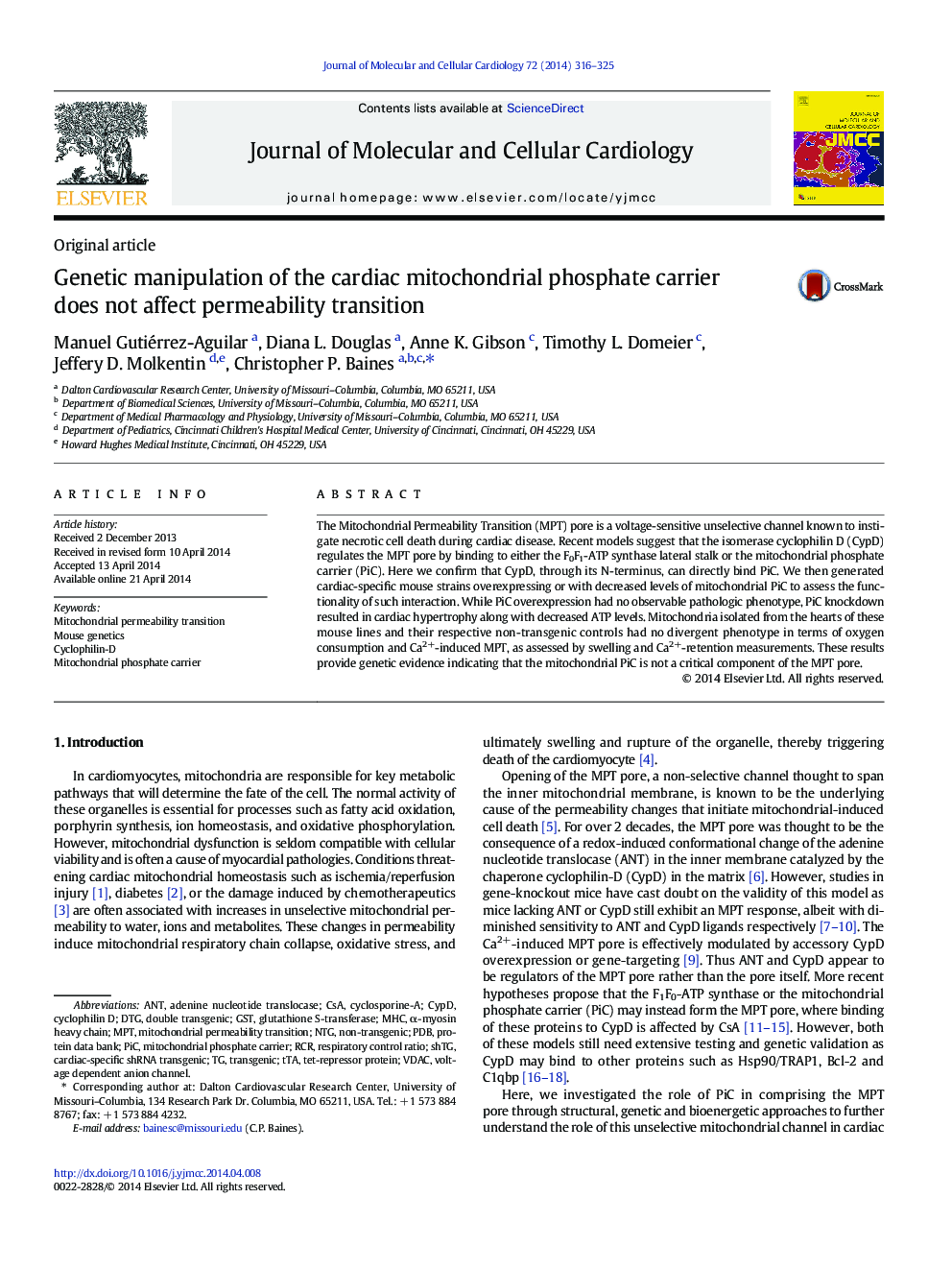| Article ID | Journal | Published Year | Pages | File Type |
|---|---|---|---|---|
| 8474875 | Journal of Molecular and Cellular Cardiology | 2014 | 10 Pages |
Abstract
The Mitochondrial Permeability Transition (MPT) pore is a voltage-sensitive unselective channel known to instigate necrotic cell death during cardiac disease. Recent models suggest that the isomerase cyclophilin D (CypD) regulates the MPT pore by binding to either the F0F1-ATP synthase lateral stalk or the mitochondrial phosphate carrier (PiC). Here we confirm that CypD, through its N-terminus, can directly bind PiC. We then generated cardiac-specific mouse strains overexpressing or with decreased levels of mitochondrial PiC to assess the functionality of such interaction. While PiC overexpression had no observable pathologic phenotype, PiC knockdown resulted in cardiac hypertrophy along with decreased ATP levels. Mitochondria isolated from the hearts of these mouse lines and their respective non-transgenic controls had no divergent phenotype in terms of oxygen consumption and Ca2+-induced MPT, as assessed by swelling and Ca2+-retention measurements. These results provide genetic evidence indicating that the mitochondrial PiC is not a critical component of the MPT pore.
Keywords
NTGCyclophilin-DCypDCyclophilin DTTAVDACRCRMPTANTDTGPICPDBGSTmitochondrial permeability transitionCSATransgenicadenine nucleotide translocasemitochondrial phosphate carrierdouble transgenicα-Myosin heavy chainCyclosporine-Anon-transgenicMHCrespiratory control ratioProtein Data BankMouse geneticsvoltage dependent anion channelglutathione S-transferase
Related Topics
Life Sciences
Biochemistry, Genetics and Molecular Biology
Cell Biology
Authors
Manuel Gutiérrez-Aguilar, Diana L. Douglas, Anne K. Gibson, Timothy L. Domeier, Jeffery D. Molkentin, Christopher P. Baines,
